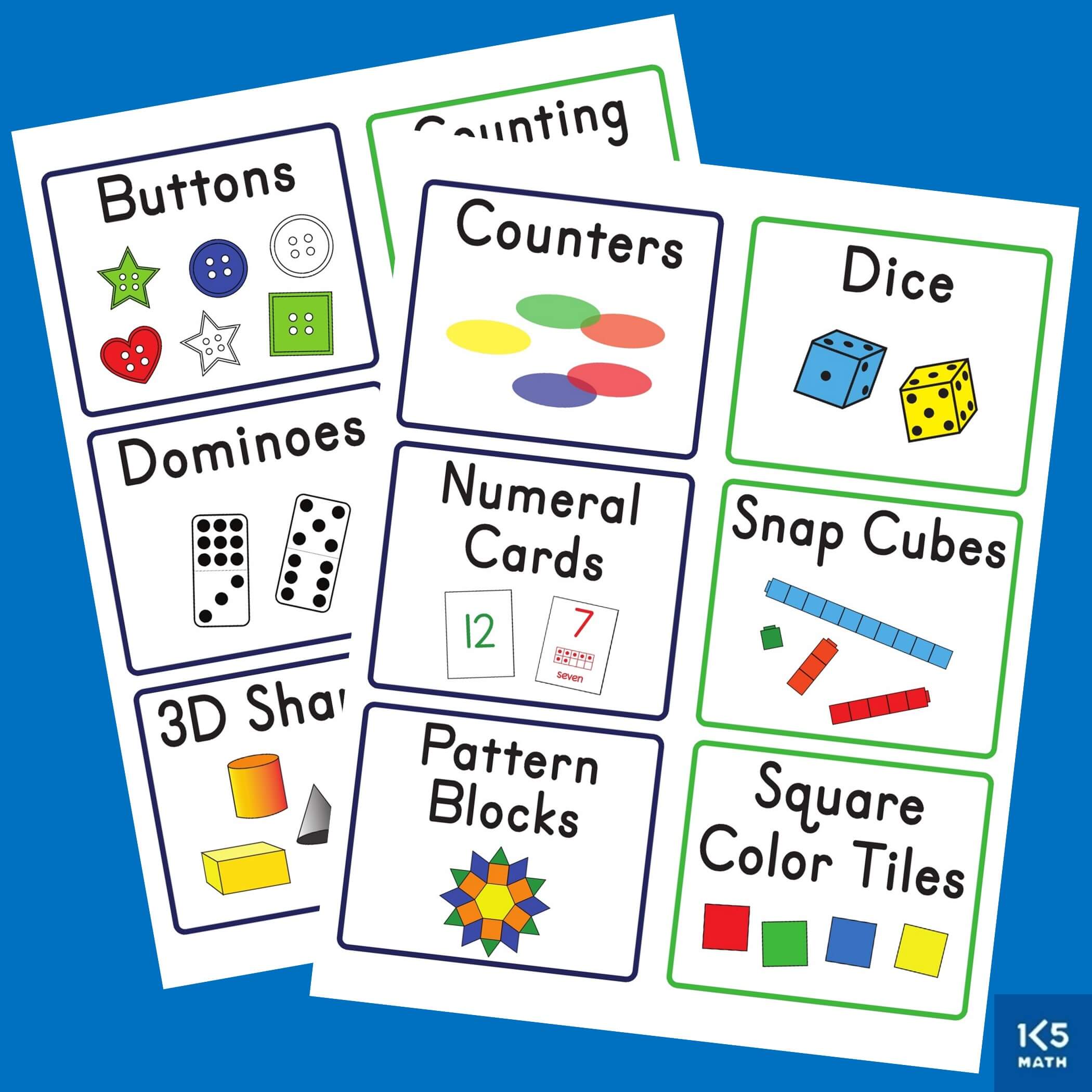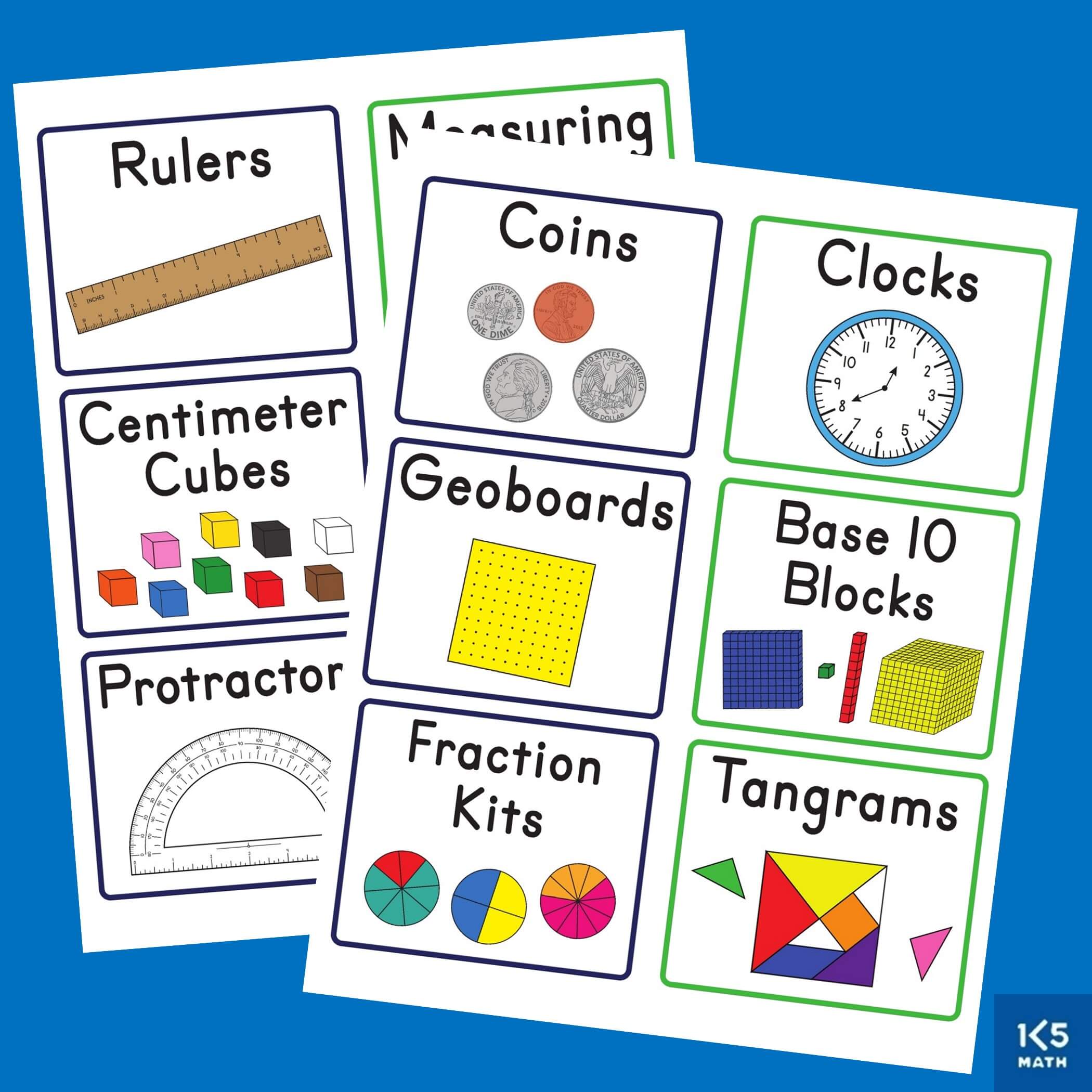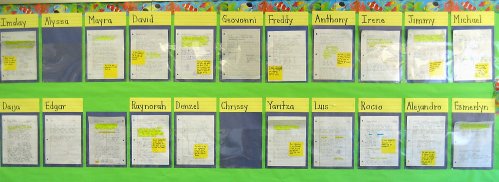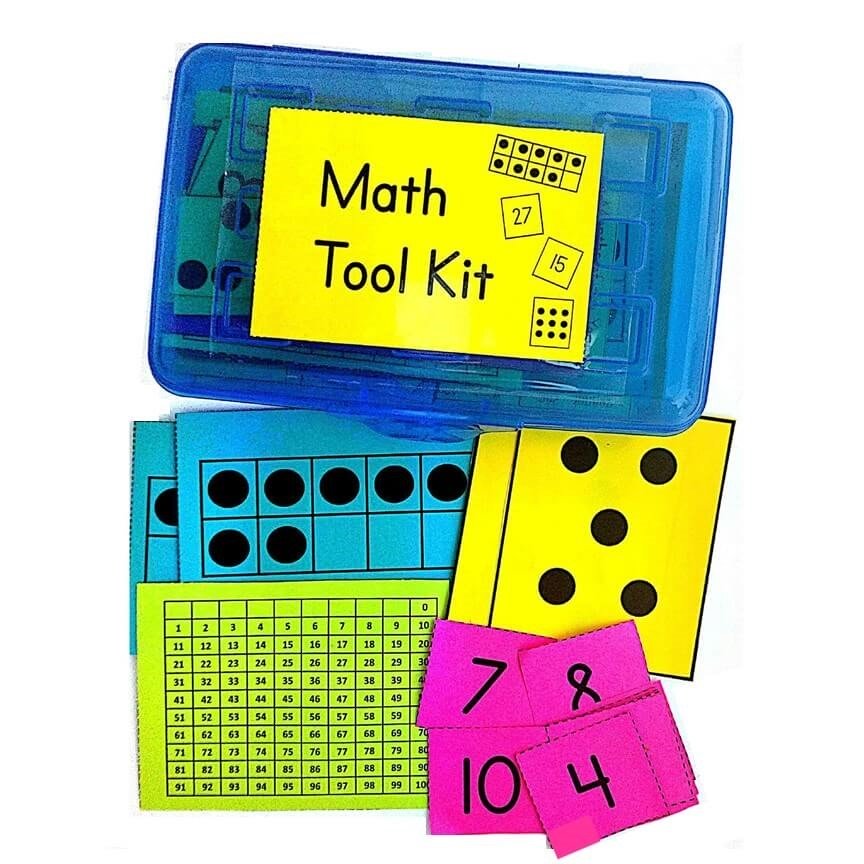Classroom Environment
The layout and physical resourcing of the classroom environment can
significantly affect how students and teachers work within it. The
following features are important to consider when setting up a classroom
environment that promotes mathematical thinking and supports student
learning.
Classroom Layout
Children need to be able to
easily move to and from work areas. The teacher needs to be able to move
around the classroom to conference with individual students and offer
assistance as needed. These practices are easier if an open layout of
furniture is used. Desks or tables arranged in clusters allow children
to easily work together in pairs or small groups with someone sitting
across from them and also next to them.
A comfortable meeting area is essential for mini-lessons and whole class discussions. This may be a mat or rug located either in a corner or the center of the room with resources used by the teacher for demonstration purposes, such as an easel whiteboard or chart paper and markers and enlarged manipulatives that can be seen by all students. Some teachers also like to designate a chair as the “mathematician’s chair” for students to use when presenting their work.
Storing Tools for Learning
A clearly designated Math Center should be used to store math manipulatives, math games, and tubs of math literature. Math manipulatives can be stored in plastic tubs or baskets that are clearly labeled so that students can use these words in their writing. It is important that all materials are readily accessible so that students can collect and return them as needed. Students at all levels need to be able to use whatever tools they choose to solve problems, and they should make their own decisions about which material might help them solve a problem. Different strategies necessitate different materials. Once students are familiar with how and where materials are stored, they should be expected to take responsibility not only for the daily cleanup, but also for ensuring that items such as recording paper are restocked at the end of each week. By assigning rotating pairs of students to this classroom job students can take responsibility for keeping the math center a well organized part of the classroom environment.
Providing students (or partnerships) with their own math tool kit is another way of ensuring that students have the tools they need on hand at all times. Assigning each tool kit a number and labeling the back of the tools stored in the tool kit with this number ensures that any tools found on the floor can be quickly returned to its assigned tool kit.


Download a FREE set of math manipulative labels here. You can print on paper and cut them out or save time by printing on these Avery Address labels (8164) and just peel and stick.
K-2 Manipulatives
Rekenreks
Laminated Hundred Boards
Hundreds Pocket Chart
Five Frames
Ten Frames
Number Lines
Math Tool Kits
Dominoes
Assorted Dice (dot and numeral)
Transparent counters
Two Color Counters
Unifix Cubes
Buttons
Base Ten Blocks
Pattern Blocks
Geoboards
3-Dimensional Shapes
Attribute Blocks
Color Tiles
Cuisenaire Rods
Demonstration Clock
Student Clocks
Balance Scales
Counters
Gr. 3-5 Manipulatives
Fraction Squares
Fraction Tiles
Pattern Blocks
Cuisenaire Rods
Base Ten Blocks
Transparent Counters
Math Tool Kits
Two Color Counters
Assorted Dice
Rulers
Metersticks and Yardsticks
Measuring Tapes
Protractors
Balance Scales
Customary Weight Set
Metric Weight Set
Demonstration Clock
Student Clocks
3-Dimensional Shapes
Centimeter Cubes
Color Tiles
Timers
Pentominoes
Geoboards
Tangrams
Measuring Cylinders
Gallon Measurement Set
Classroom Displays
The visual impact of the classroom
environment is important. When we walk into any room, the first pieces
of information we get about the environment are visual. Similarly, what
is displayed on bulletin boards and on the walls of classrooms tell a
great deal about the learning that is occurring in the classroom
environment. The walls and bulletin boards of a classroom are like a
museum. They offer a history of the students’ work and thinking and a
source of information for students, teachers, administrators, and
parents. These displays need to convey to students that their work is
valued while enabling them to broaden their own ideas as they view the
work of their peers.

Displays of students’ work should feature strongly in the classroom environment and be changed regularly throughout the year. Teachers may display work samples showing different ways that children recorded their mathematical thinking for a particular problem, or select a variety of pieces to show the different tasks completed during a particular unit. In order to ensure that all students have their work displayed during the year teachers can keep a record of whose work has been displayed, or set up a bulletin board with a distinct space for each student. Making students responsible for choosing a piece of work to be displayed in their individual space on the bulletin board encourages students to reflect on their work.
For more ideas on setting up your math classroom environment visit the pages below.
